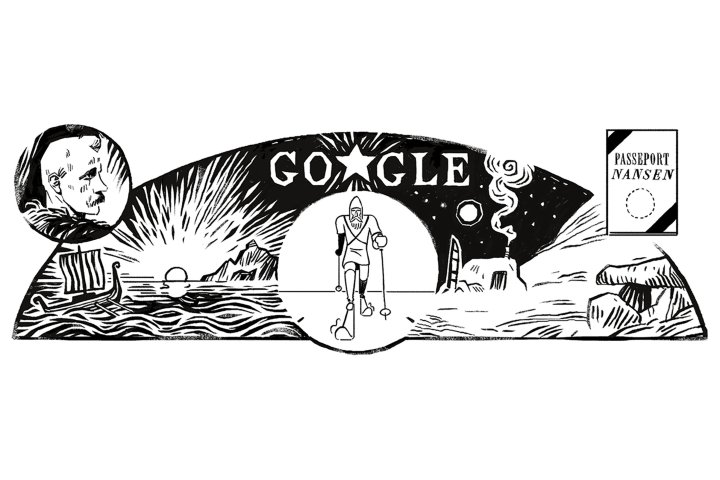MOUNTAIN VIEW, Calif. (A.W.)—Google is honoring the 156th birthday of Norwegian explorer Fridtjof Nansen with the Oct. 10 Google Doodle. Nansen, who was awarded the Nobel Peace Prize in 1922 for his work on behalf of the displaced victims of WWI, dedicated many years to helping Armenian refugees of the Armenian Genocide.

Google is honoring the 156th birthday of Norwegian explorer Fridtjof Nansen with the Oct. 10 Google Doodle.
Nansen (1861-1930) was a Norwegian scientist, polar explorer, diplomat, and human rights and refugee official. Achieving international fame first as an arctic explorer, oceanic scientist, and author, Nansen then became active in national and international diplomatic service. He served in Norwegian Foreign Service postings in London and Washington.
During WWI, Norway remained neutral while most of Europe was at war. This previous neutrality became useful in the difficult post-World War I era when empires fractured, ethno-political boundaries were redrawn, and vulnerable newly independent states emerged. From 1920 onward, Nansen worked with the League of Nations and in 1921 he was appointed the first High Commissioner of Refugees. During the protracted peace negotiations, a great many persons were still prisoners of war (e.g., German and Russian) or stateless refugees/deportees, often without adequate identity documentation. This meant that it was exceedingly difficult, if not impossible, to cross borders to safer destinations.
To solve this administrative bottleneck amidst an ongoing humanitarian crisis, he proposed the “Nansen Passport.” It was, in essence, an international document that identified an individual sufficiently to allow that person to travel freely across borders to eventual sanctuary. As a result of the Armenian Genocide, over 320,000 Armenian refugees and orphans existed throughout the Middle East. A large number of Armenians opted to use a Nansen Passport to travel to a safer country. Even larger number of other refugees used such “passports” to reach safety.
Nansen had also become involved in the somewhat controversial, but urgent, Greek-Turkish compulsory exchange of populations following the Greco-Turkish war of 1922. In this exchange, approximately 1,250,000 Greeks were sent from Turkey, while about 500,000 Turks were sent from Greece. He also assisted in famine relief in Russia and Ukraine.
Nansen died in May 1930. The League of Nations and later the United Nations honored this pioneer of humanitarian assistance to post-war refugees. This remains an urgent issue that still challenges the global community.
On the 150th anniversary of his birth in 2011, the Armenian Genocide Museum-Institute issued a medal in honor of Fridtjof Nansen and his humanitarian work.
Google Doodles are special, temporary alteration of the Google logo on the search engine’s homepage that are intended to celebrate holidays, events, achievements, anniversaries, and people. The first Google Doodle appeared in 1998.
The Armenian Weekly article “War, Refugees, and Passports” (Sept. 11, 2015) by Alan Whitehorn was used as reference for this news article. For more information about Nansen’s work with Armenian refugees, read Chris Bohjalian’s article “The Norwegian who helped the Armenians come to America” in the Burlington Free Press.
The post Google Celebrates Armenian Genocide Refugee Advocate Fridtjof Nansen’s 156th Birthday with Doodle appeared first on The Armenian Weekly.
Source: Armenian Weekly
Link: Google Celebrates Armenian Genocide Refugee Advocate Fridtjof Nansen’s 156th Birthday with Doodle
